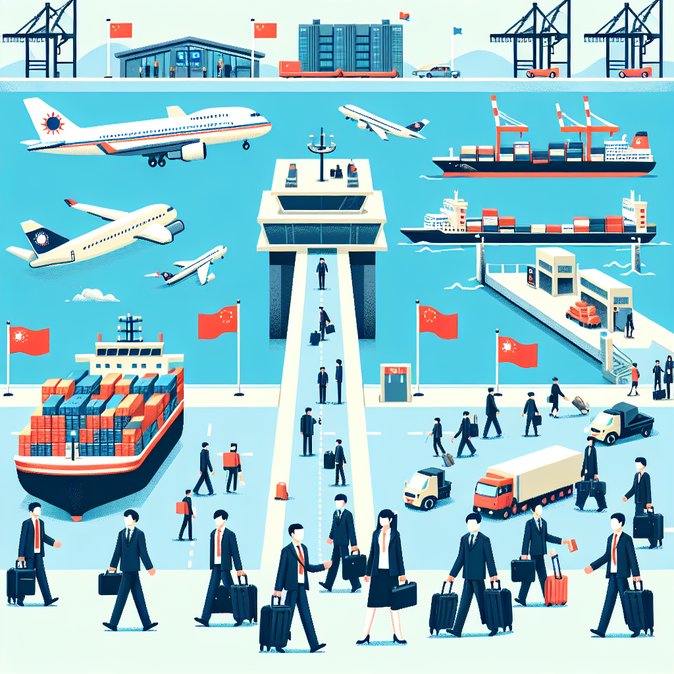
Taiwanese visitors who forget or forgo the five-year Taiwan Compatriot Permit no longer need to panic at the gate. As of 20 November, the number of Chinese ports authorised to issue a one-time Mainland Travel Permit for Taiwan Residents (commonly called the “single-entry Taibaozheng”) has been expanded from 58 to 100. The list spans 56 airports, 27 seaports and 17 land or rail checkpoints, from Kashgar in Xinjiang to the Hong Kong-Zhuhai-Macao Bridge.
The upgrade—one of the NIA’s ten new mobility measures—means that virtually every international gateway of commercial significance is now equipped to process Taiwanese arrivals in 30 minutes or less. At Guangzhou’s Pazhou Ferry Terminal, immigration counters issued their first permits within minutes of the midnight launch, while Shanghai Pudong added two bilingual self-service machines to cope with expected demand from weekend cross-strait traffic.
![100 Chinese Ports Can Now Issue On-Arrival Permits for Taiwan Residents]()
For multinational companies with offices on both sides of the Strait, the new coverage is a game-changer. It eliminates the need to route last-minute business travellers through major hubs such as Beijing or Xiamen just to obtain documentation, cutting door-to-door journey times by up to six hours. HR managers should still remind staff that the single-entry document is valid only for three months and one exit; longer assignments require the standard five-year card.
Beijing hopes the move will spur a post-pandemic rebound in cross-strait tourism and investment. In 2024, visitor numbers from Taiwan recovered to only 38 % of pre-COVID levels. Travel agents predict a 20 % uplift this winter, helped by discounted airfares and the reopening of the “mini-three-links” ferry routes in Fujian.
Taiwan’s Mainland Affairs Council acknowledged the facilitation but reiterated calls for “equal dignity” in future negotiations. Political sensitivities notwithstanding, mobility specialists expect corporate demand for same-day travel to electronics supply-chain hubs such as Kunshan and Chongqing to intensify, making the new port coverage a practical boon.
The upgrade—one of the NIA’s ten new mobility measures—means that virtually every international gateway of commercial significance is now equipped to process Taiwanese arrivals in 30 minutes or less. At Guangzhou’s Pazhou Ferry Terminal, immigration counters issued their first permits within minutes of the midnight launch, while Shanghai Pudong added two bilingual self-service machines to cope with expected demand from weekend cross-strait traffic.

For multinational companies with offices on both sides of the Strait, the new coverage is a game-changer. It eliminates the need to route last-minute business travellers through major hubs such as Beijing or Xiamen just to obtain documentation, cutting door-to-door journey times by up to six hours. HR managers should still remind staff that the single-entry document is valid only for three months and one exit; longer assignments require the standard five-year card.
Beijing hopes the move will spur a post-pandemic rebound in cross-strait tourism and investment. In 2024, visitor numbers from Taiwan recovered to only 38 % of pre-COVID levels. Travel agents predict a 20 % uplift this winter, helped by discounted airfares and the reopening of the “mini-three-links” ferry routes in Fujian.
Taiwan’s Mainland Affairs Council acknowledged the facilitation but reiterated calls for “equal dignity” in future negotiations. Political sensitivities notwithstanding, mobility specialists expect corporate demand for same-day travel to electronics supply-chain hubs such as Kunshan and Chongqing to intensify, making the new port coverage a practical boon.









